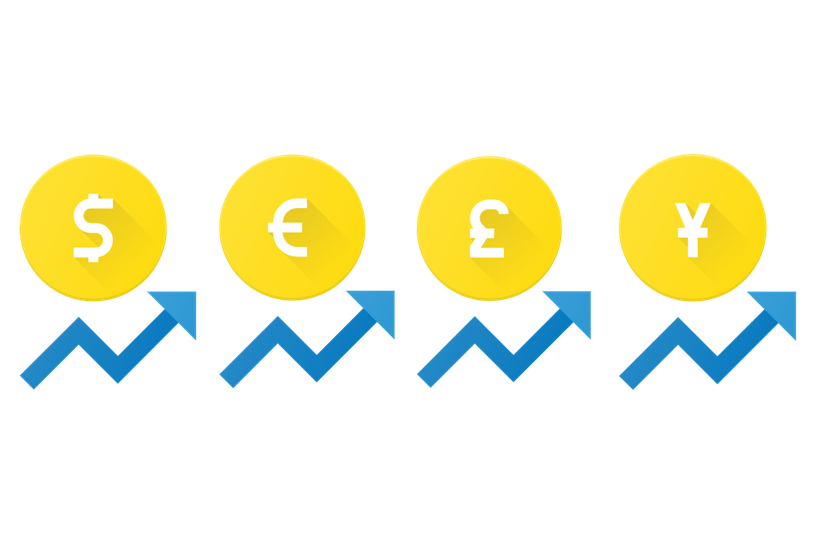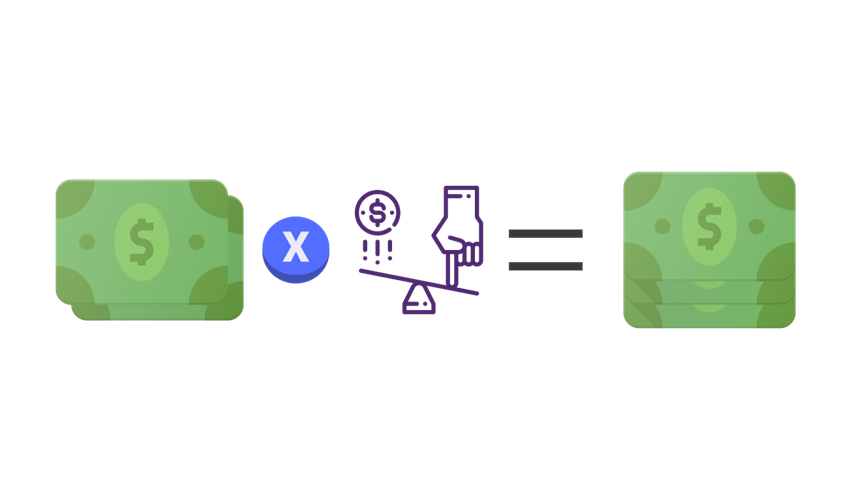Trading Forex explained
In trading, there are various assets that people buy and sell to get a payout. These assets range from currencies and shares to commodities and derivatives. In general, people can trade with anything that they own, be it the actual property or a digital one.
And in this diverse world, currency trading - also known as Forex trading - is one of the most popular financial activities. And as for the name itself, FX means foreign exchange, which is associated with buying and selling foreign currencies; according to the United Nations, there are 180 official currencies around the world. Therefore, there is a big selection of currencies to choose from.
Real-life example
So, let’s explain how FX works and what its applications are. One of the most popular real-life examples of foreign exchange is traveling. But even those people who do not travel can perform Forex trading.
For example, when you want to order a phone online from a different country, you have to follow some steps. If the phone costs $500 and you live in Europe, you need to exchange your euros into the US dollars.
Let’s say the exchange rate of EUR/USD is 1.1. This means that if you want to buy $500, you have to sell approximately 455 euros. So, you went to the bank and bought 500 US dollars.
But after some time, you decided not to buy the phone. Now, you need to go to the bank and get your euros back. But instead of 455 euros, you’re getting 456, meaning that the exchange rate decreased from 1.1 to 1.09. As a result of these series of exchanges, you gained one euro.
So, that’s basically how Forex trading works in real-life. Traders usually put their funds into one particular currency when its price goes down. This way, buying it becomes more affordable. And then, they wait for a suitable moment, when the price goes up again. Then they tend to sell their assets and get some payouts.
Online Forex trading dominates the field
Now, as we mentioned earlier when we were explaining the Forex meaning, this method can work both online and offline. In terms of offline foreign exchange, traders can go to the banks and exchange booths to get other country’s currency. But usually, this type of exchange is done on the internet.
And the reason for that is the simplicity and convenience of exchanging funds without having to go anywhere. Online traders can stay at home or be wherever they want and still do Forex with just their laptop and internet connection. They usually find trusted exchange websites, speculate on the increase and decrease of the prices, and then buy or sell the currencies online.

Currencies in Forex explained for dummies
As you already know, Forex trading deals with currencies of different countries. And since there are around 200 different currencies, traders aren’t limited to their choices.
In Forex, there’s one specific term called currency pairs. It’s basically a connection between the two currencies and their prices. For example, the most popular currency pair is EUR/USD which contains the US dollar and euro.
The EUR/USD pair, just like any other pair, has a specific exchange rate. The exchange rate is basically how many US dollars one euro can buy. For example, if the EUR/USD exchange rate is 1.5, one euro can buy 1.5 dollars. In Forex, there are many kinds of exchange rates, including fixed and floating, rising and falling, etc.
So, how does Forex work with all of these indicators? Usually, traders wait until the exchange rate on their preferred currency pair, say, USD/JPY decreases; that’s when they tend to buy US dollars. Then, when the price goes up again or even surpasses the previous point, they go ahead and sell those dollars to get even more Japanese yen back.
The basic terms and elements of FX explained easily
For beginners, Forex trading can seem quite difficult to understand. However, once they get a hold of basic elements of this activity, everything becomes easier. But that’s not to say the process of trading itself becomes simpler, because it’s not. So, some of the elements of Forex include:
- Leverage;
- Pips;
- Spreads;
- Margin.
Leverage
Let’s take a look at each of them.
Leverage is basically a multiplication amount of your funds and it’s measured in ratios such as 1:50, 1:100, 1:200 and so on. So, here’s how it works: if you make a deposit of, say, $1,000, leverage can increase your funds by the promised amount. So, if the leverage is 1:50, you’ll get $5,000 on your account.
But what does it actually mean? Can you get the leveraged funds right away? Well, no, that’s not how it works. Basically, when you’re getting a certain ratio of leverage, your trading funds increase so that you can buy more currencies online. This, in turn, increases the Forex trading volume and the chance of getting higher payouts as well.

However, there’s also a danger here: on the one hand, leverage increases the possible payout chances; but on the other hand, it also increases the losses. So, if the leverage is 1:50, your actual loss will also be multiplied by 50. In many cases, when someone provides the Forex simple explanation, they try to paint leverage as only a positive feature, however, as you can see in the previous example, it can also be damaging.
Understanding Forex pips
Pips are yet another key indicator in Forex trading that represent the change in currency prices. A pip is the smallest price change that can occur in any currency price and is usually equal to 0.0001 price change (in other pairs, it’s equal to 0.01). For example, when the EUR/USD exchange rate increases from 1.4999 to 1.5001, you get a two-pip movement.
But, as already mentioned, some pips are counted differently and instead of 0.0001, they represent 0.01 change in price. That’s because some currency pairs like EUR/USD are more stable and require much more detailed indicators like 0.0001-change. But some, such as USD/JPY, can change more quickly like from 103.34 to 103.36. That’s why they need a looser indicator like 0.01-change.
Spreads - a difference in pips
Now, spreads and pips are somewhat interconnected: a pip is used as a single unit to count spreads. And here’s how it works: every currency pair has two prices - bidding and asking. A bidding price is basically a buying price at which a trader is ready to buy, say, US dollars for 1 euro. Asking price, on the other hand, is a selling price at which the market offers US dollars for 1 euro.
Usually, the buying price is higher than the selling price. So, a trader might be able to buy 1.4999 US dollars with 1 euro; however, that same 1 euro can be sold for, say, 1.4997. Such a difference in buying and selling prices can eventually bring payout to the Forex trader.
Margin
What is Forex margin? Margin in Forex trading is closely connected to the leverage. It’s sometimes called a mutual agreement between the trader and the trading establishment whose platform the trader uses. So, here’s how it works: when a Forex trader wants to trade, for instance, $100,000 of the EUR/USD currency pair, they’re not required to deposit the whole $100,000 on their account.
With the help of margin, they can put a certain amount of their funds to the trade while the trading establishment covers the rest. So, if the margin rate is 1%, the trader can deposit $1,000 on their account while the partnering establishment will cover the rest of $999,000. A similar thing happens with leverage.
But it also comes with its risks: margins have a certain limitation to the losses in trading. If a trader approaches the loss of $1,000 in the same marginal rate of 1%, the establishment might ask them to either increase the deposit or the whole trade closes and the deposits will be lost.